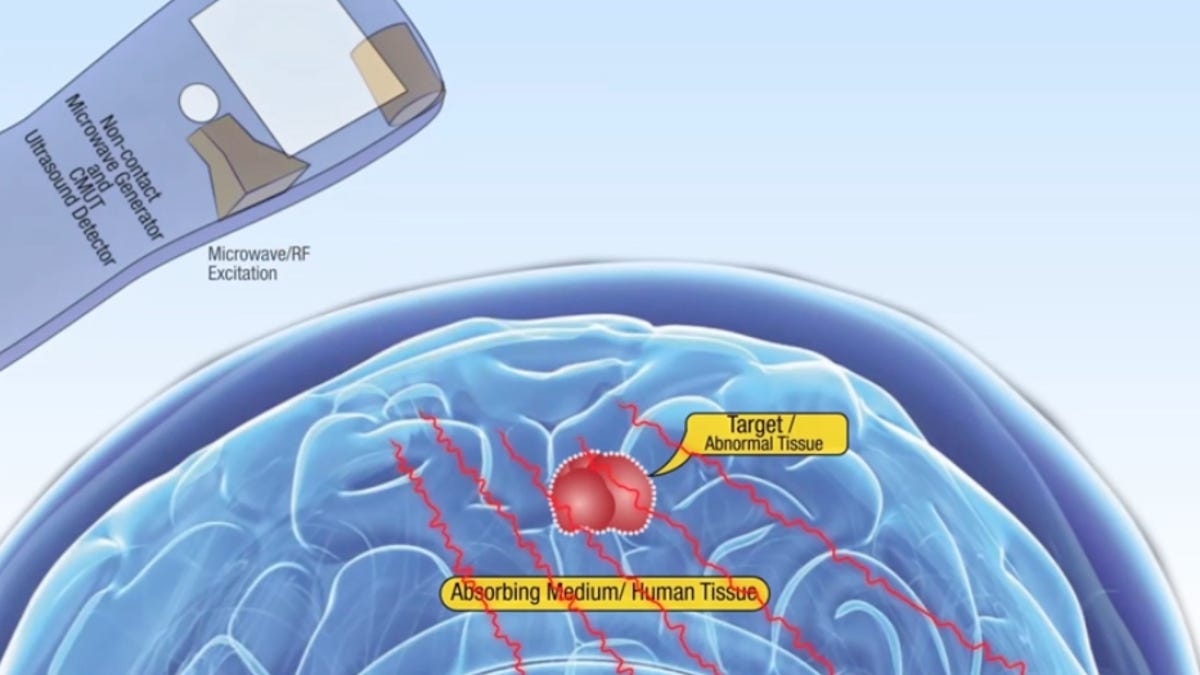Tricorder-like tech could detect bombs, tumors
Taking on a challenge from DARPA, Stanford scientists create scanning technology similar to the piece of Star Trek gear that's "the holy grail of detection devices."
When it comes to the most impressive practical technology in the sci-fi universe, a serious nod goes to the original tricorder from "Star Trek." Dr. McCoy, Spock and the other Federation explorers used the handheld device to analyze both the health of patients in sickbay and the atmosphere on alien planets.
Researchers at Stanford University have been developing tricorder-like technology that could also have broad applications, from detecting explosives underground to spotting tumors in the human body.
Others have attempted to create something similar to a tricorder. The Scanadu Scout, for example, was an attempt to put " an emergency room in the palm of your hand," as one of the founders told CNET. The Scanadu team is a competitor in an XPrize competition to build a tricorder equivalent, first announced in 2012, with winners to be announced in January 2016. To win, a group needs more than a good concept; it must have built something that works. For more on the Qualcomm Tricorder XPrize competition see this story excerpted from CNET Magazine.
XPrize is not the only group interested in tricorder-like technology, however. For this set of Stanford researchers, the impetus came from DARPA, the US' Defense Advanced Research Projects Agency. DARPA was looking for technology that could find buried IEDs (improvised explosive devices) that can't be spotted with metal detectors. To avoid setting off explosions, the scanning technology would have to work without touching the ground.
"What makes the tricorder the holy grail of detection devices is that the instrument never touches the subject," Assistant Professor Amin Arbabian, lead on the Stanford project, said in a statement. "All the measurements are made through the air, and that's where we've made the biggest strides."
The Stanford team's concept involved shooting microwaves at the area in question to heat and expand the ground, causing it to send up ultrasound pressure waves. The dirt would heat more, and expand more, than any plastic explosives present, and the difference caused by that "squeeze" would be identifiable in the pressure waves.
The ultrasound scans we're familiar with in medical uses involve direct skin contact because sound waves grow considerably weaker when moving from solid to air. For the Stanford group's approach to work, it needed detectors sensitive enough to read these weaker signals, and the team said it provided them, building capacitive micromachined ultrasonic transducers (CMUTs) designed for the task.
Their work was detailed in the journal Applied Physics Letters in February, and presented in October at the International Ultrasonics Symposium in Taipei. A new video, embedded below, illustrates how the same technology could be used to find abnormal tissue in the human brain.
Finding deadly bombs in the body
In addition to potentially protecting soldiers from dangerous explosions, the Stanford researchers think their new tech could help out in the hospital because the same principles could be used to help detect tumors.
In the lab, the team sent microwave pulses into a fleshlike test material, which heated it by one thousandth of a degree, a level considered safe. On the same principles as the bomb detection, these pulses caused the flesh substitute to expand, contract and produce ultrasonic waves, from which the researchers were able to determine the location of an object that had been embedded inside, just like a tumor in a human body.
"We think we could develop instrumentation sufficiently sensitive to disclose the presence of tumors, and perhaps other health anomalies, much earlier than current detection systems, nonintrusively and with a handheld portable device," Arbabian said.
The team's other lead, Research Professor Pierre Khuri-Yakub, suggested that the technology could even become "practical and widely available" within the next 15 years.
Wouldn't Spock be impressed.


